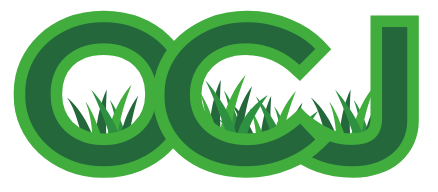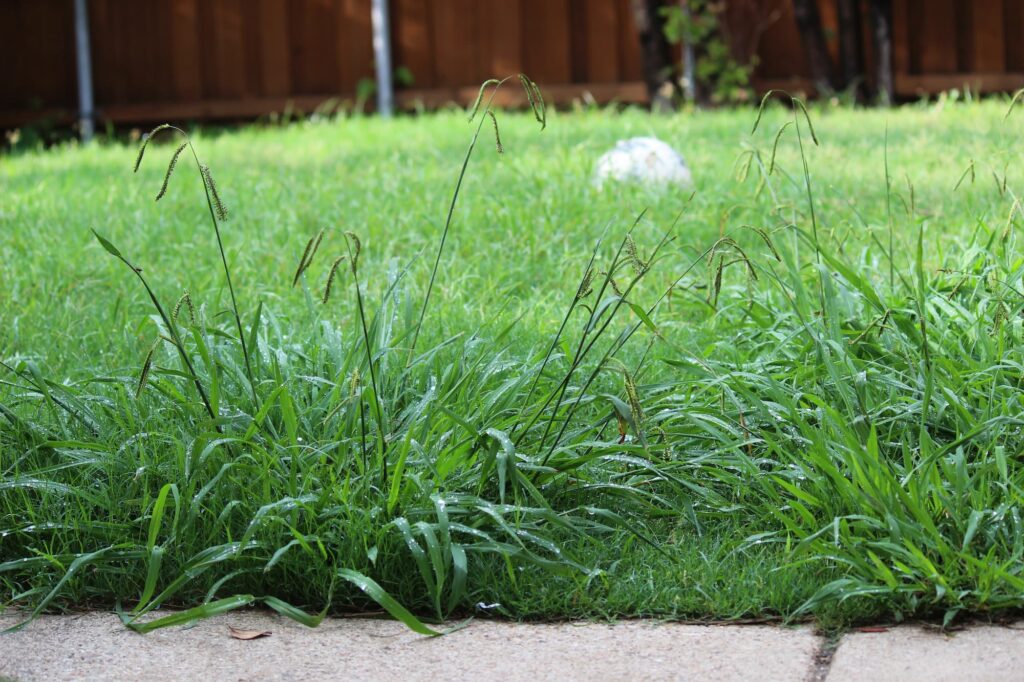Are you tired of dealing with pesky weeds in your Florida lawn? Well, you’re not alone! Weeds can be a significant nuisance, but you can effectively manage them with the proper knowledge and techniques. In this article, we will explore the various types of weeds commonly found in Florida lawns and provide practical tips on proper mowing techniques, watering practices, herbicide selection, and regular maintenance to keep your lawn weed-free.
First and foremost, it’s essential to understand the weeds plaguing Florida lawns. Each weed requires a specific approach for effective control, from broadleaf weeds like dandelions and clover to grassy weeds like crabgrass and goosegrass. We will delve into the characteristics of these weeds, helping you identify them and develop a targeted strategy to tackle them head-on. By becoming familiar with the enemy, you can better equip yourself to combat their presence on your lawn.
Now that you have a basic understanding of the types of weeds let’s dive into the practical techniques that can help prevent their growth. Proper mowing is critical, promoting a healthy lawn and discouraging weed growth. We will discuss the ideal mowing height, frequency, and techniques to ensure you’re cutting your grass at the right time and in the right way. Additionally, we will explore the importance of watering practices in minimizing weed growth. Following our expert advice on watering frequency, duration, and timing, you can create an environment less conducive to weed proliferation. So, let’s get started on your journey to a weed-free Florida lawn!
Understanding the Types of Weeds in Florida Lawns
You might be surprised by the wide variety of weeds that can infest your Florida lawn, each with unique characteristics and growth patterns. It’s essential to understand the types of weeds you may encounter to manage them effectively. One common type of weed in Florida lawns is the dollarweed, also known as pennywort. Dollar weed has round, flat leaves that resemble small lily pads. It thrives in moist areas and can quickly take over a lawn if left unchecked. Another common weed is the crabgrass, known for its ability to spread rapidly and invade thin or bare areas of the property. Crabgrass has broad, flat leaves and produces long, branching stems that sprawl across the ground. It’s essential to identify these types of weeds so you can take the appropriate steps to control their growth and prevent them from overtaking your lawn.
In addition to dollar weed and crabgrass, Florida lawns can also be plagued by other types of weeds, such as broadleaf and grassy weeds. Broadleaf weeds include dandelions, plantains, and chickweed, among others. These weeds have wider and flatter leaves than grass blades, making them easy to spot on the lawn. They can quickly multiply and compete with grass for resources, creating a patchy and unsightly lawn. On the other hand, grassy weeds, such as goosegrass and annual bluegrass, closely resemble the desired grass species and can be difficult to differentiate. These weeds can be particularly challenging to manage as they can blend in with the rest of the lawn. By familiarizing yourself with the different types of weeds in your Florida lawn, you can develop a targeted weed management plan that effectively addresses each weed type.
Proper Mowing Techniques for Weed Prevention
To prevent weed growth, it’s essential to employ proper mowing techniques in your Florida yard. One of the most important aspects of proper mowing is to set your mower blade at the correct height. For most Florida lawns, keeping the grass at an altitude of about 3 to 4 inches is recommended. This height allows the grass to shade the soil, preventing weed seeds from germinating and establishing themselves in your lawn. Additionally, taller grass blades help to promote more profound root growth, making your property more resistant to weeds and drought.
Another essential factor to consider is the frequency of mowing. It’s best to mow your lawn frequently, but never remove more than one-third of the grass blade length at a time. If your desired grass height is 4 inches, you should mow when the grass reaches around 5 to 6 inches. Cutting too short can stress the grass and leave bare spots, allowing weeds to take over. By following these mowing practices, you can create a dense and healthy lawn that effectively competes with weeds, keeping them at bay and maintaining a beautiful Florida yard.
Effective Watering Practices to Minimize Weed Growth
Implementing proper watering techniques is critical to reducing the growth of unwanted weeds in your lush, green yard. One of the most critical aspects of effective watering practices is to water deeply and infrequently. This means giving your lawn a thorough soaking, allowing the water to penetrate deep into the soil. Shallow and frequent watering encourages external root growth, promoting weed growth. By watering deeply, you enable the roots of your grass to grow deeper into the soil, making them stronger and more resistant to weeds.
Another critical aspect of effective watering practices is to water in the early morning. This allows the grass to dry out during the day, preventing the growth of fungi and diseases that can weaken your lawn and create opportunities for weeds to take hold. Watering in the evening or at night can lead to prolonged wetness, which provides a favorable environment for weed growth. Additionally, watering in the early morning ensures that the grass has sufficient time to dry before nighttime temperatures drop, reducing the risk of frost damage.
These proper watering techniques can minimize weed growth and maintain a healthy, vibrant lawn. Remember to water deeply and infrequently, allowing the roots to grow strong and deep, and to water in the early morning to prevent the growth of fungi and diseases. With consistent and effective watering practices, you can keep your Florida lawn weed-free and enjoy a beautiful, well-maintained yard.
Choosing the Right Herbicides for Weed Control
Selecting the appropriate herbicides is crucial when it comes to effectively controlling unwanted vegetation in your yard. In Florida, where warm and humid weather provides an ideal environment for weed growth, choosing the right herbicides can make a significant difference in managing weeds in your lawn. When selecting herbicides, it is essential to consider the type of weeds you are dealing with. Broadleaf weeds, such as dandelions and clover, require herbicides specifically formulated to target these types of plants. On the other hand, grassy weeds, like crabgrass and Bermuda grass, require herbicides specifically designed to control them. By identifying the type of weeds in your lawn and selecting herbicides that target those specific plants, you can maximize the effectiveness of weed control.
In addition to considering the type of weeds, it is also important to choose herbicides that are safe for your specific lawn type. Different types of grasses may have varying levels of tolerance to certain herbicides, so it is crucial to read the label carefully and choose a product that is compatible with your lawn. Additionally, consider whether you prefer a selective or non-selective herbicide. Selective herbicides target specific types of weeds while leaving your desirable grass unharmed. Non-selective herbicides, on the other hand, will kill any vegetation they come into contact with, so they should be used with caution and only on areas where you want to completely eliminate all plant growth. By carefully considering the type of weeds, the compatibility with your grass, and the selectivity of the herbicide, you can choose the right products to effectively manage weeds in your Florida lawn.
Regular Maintenance Tips for a Weed-Free Florida Lawn
Maintaining a weed-free lawn in Florida requires consistent attention and proper care. Regular maintenance is essential to keep weeds at bay and ensure that your lawn stays healthy and vibrant. Here are some tips to help you keep your Florida lawn weed-free.
Firstly, it is important to mow your lawn at the appropriate height. Set your mower blades to the correct height for your grass type and make sure not to cut it too short. Taller grass shades the soil, preventing weed seeds from germinating and taking root. Additionally, leaving the grass clippings on the lawn acts as a natural mulch, providing nutrients and reducing weed growth.
Secondly, regular watering is crucial for a weed-free lawn. Deep, infrequent watering encourages deep root growth, making your grass more resilient and competitive against weeds. Water your lawn in the early morning to reduce evaporation and allow the grass to dry before nightfall, as prolonged moisture can lead to fungal diseases.
Lastly, proper fertilization and soil management are vital for weed control. Test your soil to determine its pH level and nutrient content, and adjust accordingly. A well-balanced fertilizer will promote healthy grass growth and discourage weed invasion. Additionally, consider using organic mulch or compost to increase soil health and suppress weed growth.
By following these regular maintenance tips, you can keep your Florida lawn thriving and weed-free. Consistent attention to mowing, watering, and fertilization will go a long way in preventing weeds from taking over and ensure that your lawn remains a lush and beautiful space. So roll up your sleeves, grab your gardening tools, and get ready to enjoy a weed-free lawn in the Sunshine State.
Frequently Asked Questions About Managing Weeds For Florida Lawns
How long does it take for herbicides to kill weeds in my Florida lawn?
It typically takes around 1-2 weeks for herbicides to effectively kill weeds in a Florida lawn. However, the exact time frame can vary depending on the type of herbicide used and the specific weed species being targeted.
Can I use natural weed control methods in my Florida lawn?
Yes, natural weed control methods can be used in your Florida lawn. There are several options such as hand-pulling, using vinegar or boiling water, and applying corn gluten meal as a pre-emergent herbicide.
Are there any specific weeds that are resistant to herbicides in Florida?
Yes, there are specific weeds in Florida that have developed resistance to herbicides. Some examples include tropical signalgrass, goosegrass, and Florida pusley. This makes it important to use a combination of methods for effective weed control.
How often should I mow my lawn to prevent weed growth?
Mowing your lawn regularly is essential to prevent weed growth. Aim to mow at least once a week during the growing season, but adjust frequency based on grass type and weather conditions.
Are there any specific watering schedules that can help reduce weed growth in my Florida lawn?
Watering schedules can indeed help reduce weed growth in your Florida lawn. By watering deeply and infrequently, you encourage deep root growth in your grass, making it more competitive against weeds.
Final Thoughts
Managing weeds in your Florida lawn requires a combination of understanding the types of weeds, implementing proper mowing techniques, practicing effective watering practices, choosing the right herbicides, and regular maintenance. By familiarizing yourself with common Florida weeds and their characteristics, you can better identify and address them. Maintaining the proper mowing height and frequency can prevent weed seeds from germinating and spreading. Additionally, watering your lawn deeply and infrequently can help discourage weed growth by promoting healthy grass roots. When choosing herbicides, it is essential to select ones that are specifically formulated for the types of weeds present in your lawn and follow the instructions carefully. Finally, regular maintenance such as removing weeds by hand, aerating the soil, and fertilizing appropriately can help keep your Florida lawn weed-free. By implementing these strategies, you can enjoy a beautiful and healthy lawn free from unwanted weeds.



